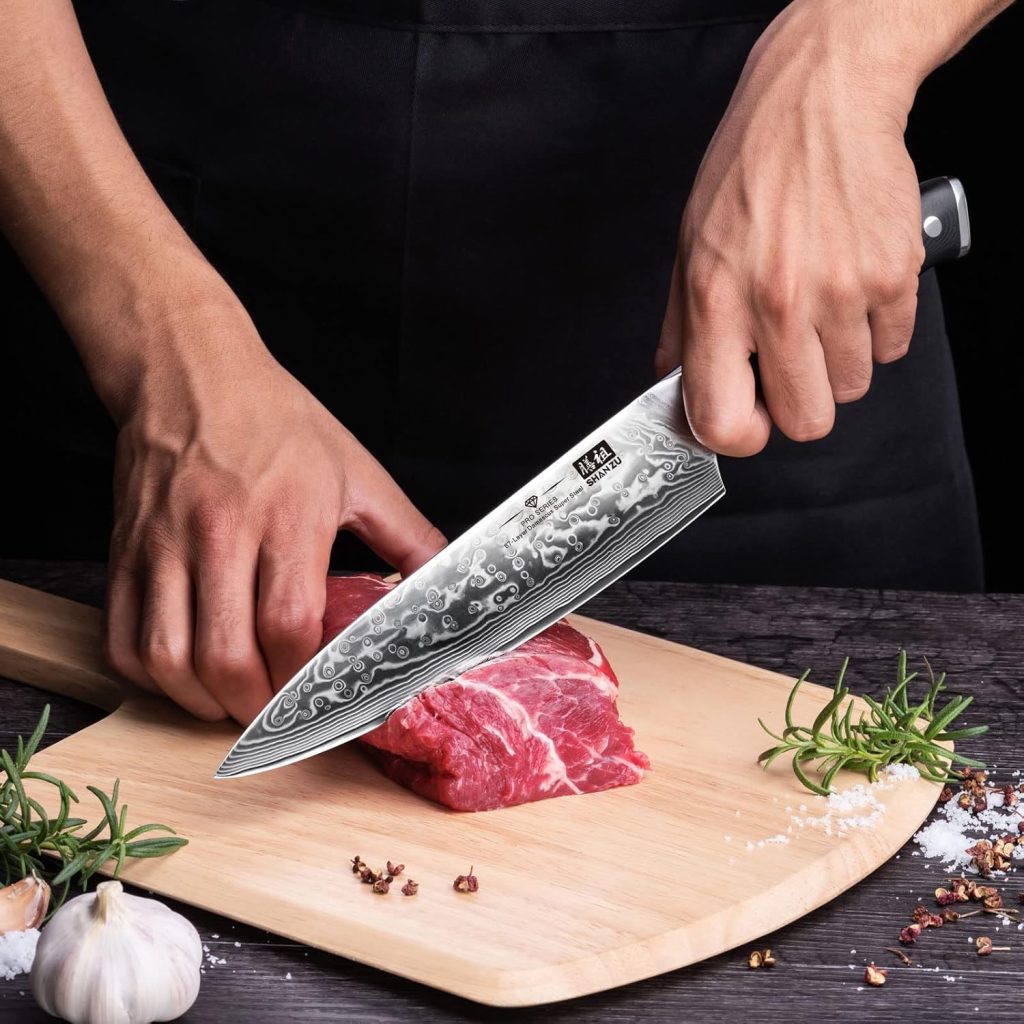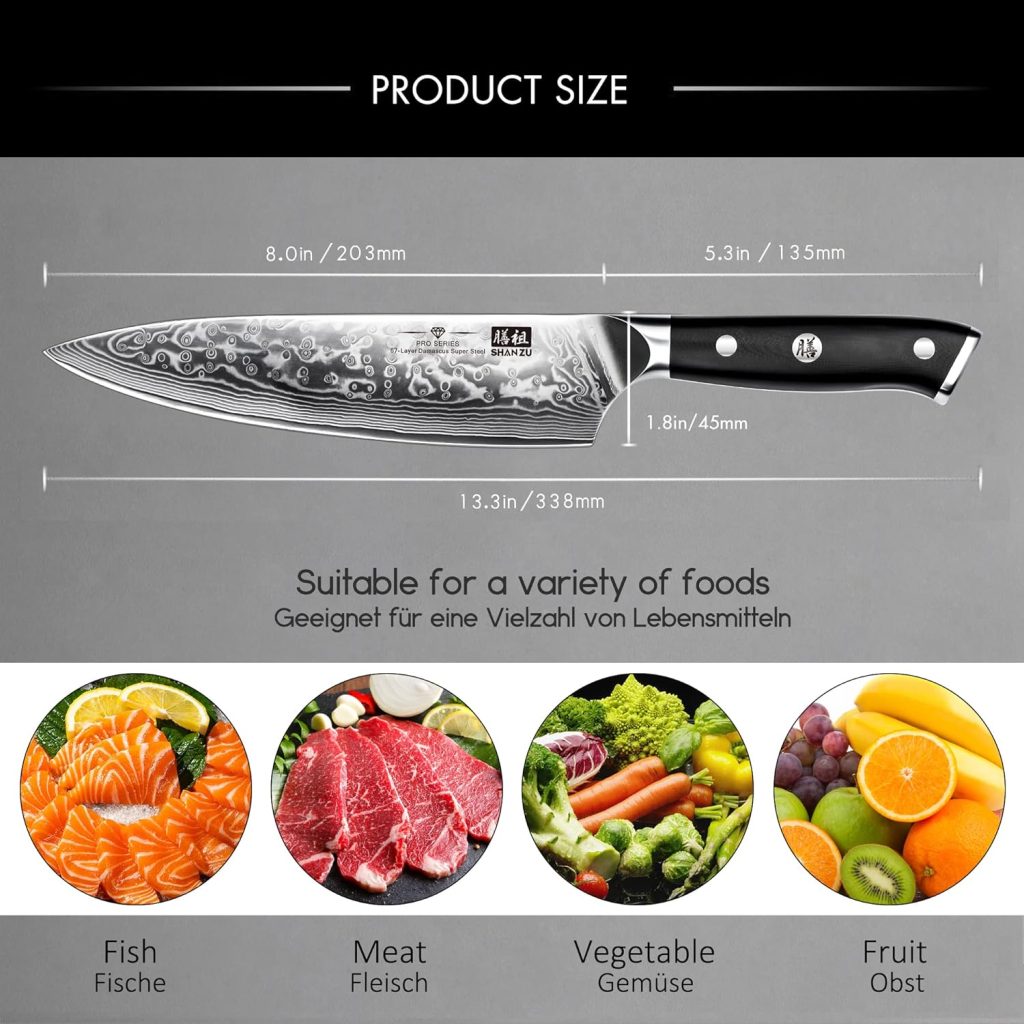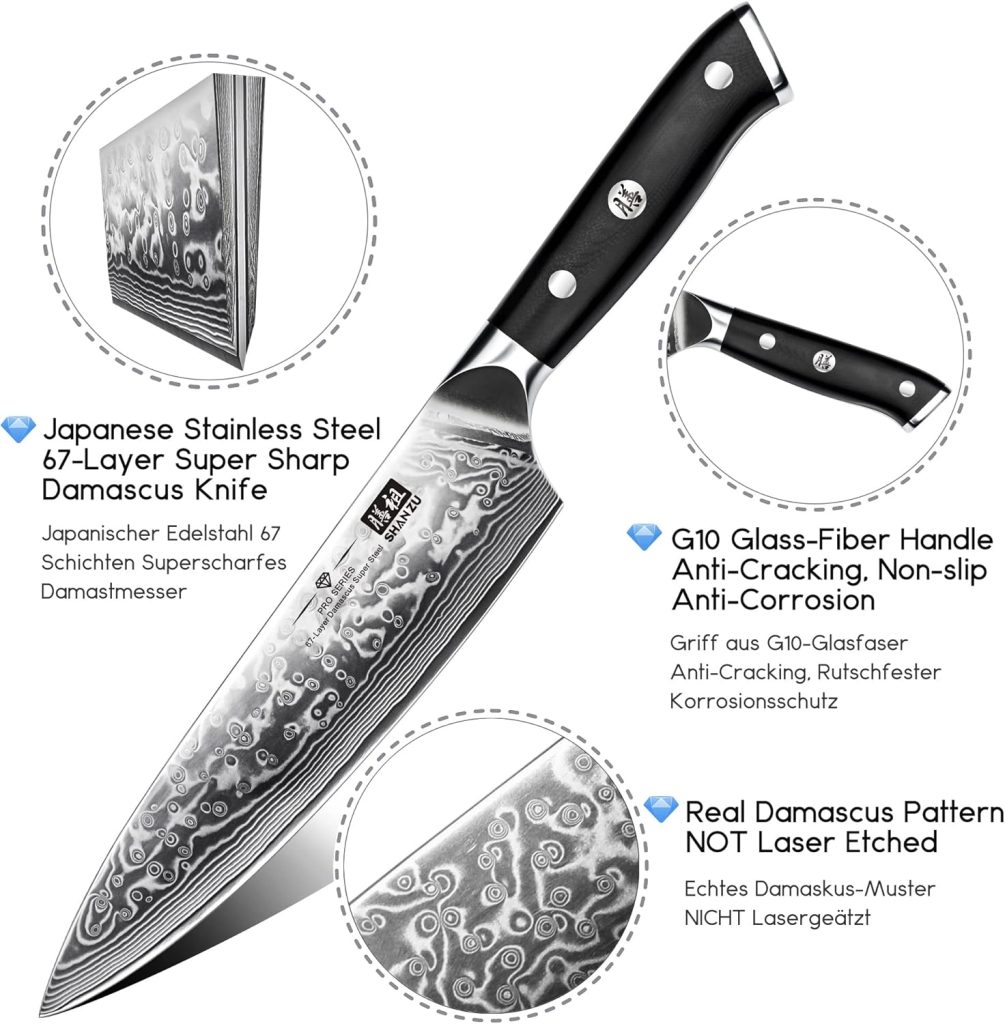When it comes to precision, sharpness, and durability, Japanese stainless steel kitchen knives have set the standard. Revered by chefs worldwide, these knives combine centuries of craftsmanship with modern technology to deliver tools that make food preparation more efficient, precise, and enjoyable. Whether you’re a professional chef or a passionate home cook, investing in a high-quality Japanese kitchen knife can transform your cooking experience.
In this ultimate guide, we will delve deep into the world of Japanese stainless steel kitchen knives, exploring their history, key features, types, and how to choose the best knife for your needs. We’ll also look at the advantages of Japanese knives, maintenance tips, and some top recommendations from trusted brands.
The History and Craftsmanship of Japanese Knives
A Rich Tradition of Blade-Making
Japan’s tradition of blade-making dates back over 1,000 years, and the country is renowned for its ability to create knives that are not only functional but also pieces of art. Japanese knives were historically forged for the Samurai, used for precision cutting in both battle and everyday tasks. These early blades were crafted from high-carbon steel, and over time, Japanese artisans developed the techniques that would eventually lead to the world-famous knives of today.
The Influence of Samurai Swordsmiths
The influence of Samurai swordsmithing is evident in the design and forging techniques of Japanese kitchen knives. Just like Samurai swords, Japanese kitchen knives are forged using a technique called folding or layering, where layers of metal are folded over and over to create a stronger, more durable blade. This technique gives many Japanese knives their distinctive Damascus-style patterns on the surface, making them as beautiful as they are functional.
Modern Innovations
While traditional methods are still highly regarded, modern Japanese knives also incorporate innovative materials and technology. Today, stainless steel, high-carbon steel, and ceramic composites are commonly used to create knives that are not only sharp and durable but also resistant to corrosion and staining.

Why Choose Professional Japanese Stainless Steel Kitchen Knives?
There are many reasons why Japanese knives have become a staple in kitchens worldwide. Here are some of the top benefits of choosing professional Japanese stainless steel kitchen knives:
1. Unparalleled Sharpness
One of the most significant advantages of Japanese knives is their razor-sharp edge. Thanks to the high-quality steel and precise honing, Japanese knives can achieve a sharper edge than most Western-style knives. The blades are typically sharpened at a steeper angle (between 8-12°) compared to Western knives, which are usually sharpened at a 20° angle. This fine edge allows for precision cutting, making Japanese knives ideal for delicate tasks like slicing fish or dicing vegetables.
2. Durability and Longevity
Japanese knives are built to last. The use of high-quality stainless steel and advanced forging techniques ensures that these knives maintain their sharpness and integrity for years. Many Japanese knives are made with a core of high-carbon steel that is sandwiched between layers of softer steel, providing both a tough core and a corrosion-resistant exterior. This construction allows for a blade that retains sharpness while resisting rust and wear.
3. Precision and Control
The lightweight construction and ergonomic design of Japanese knives offer exceptional control and precision. Unlike heavier, more bulky knives, Japanese kitchen knives are often well-balanced, allowing for more comfortable use during extended cutting sessions. The handle design also contributes to the knife’s overall feel, with many Japanese knives featuring wooden handles or G-10 composite handles, which offer a secure, comfortable grip.
4. Aesthetics and Craftsmanship
Japanese knives are not only functional but also visually stunning. With their beautiful Damascus patterns, polished steel finishes, and unique handles, these knives can be a centerpiece in any kitchen. The craftsmanship and artistry involved in making each knife contribute to its appeal, making these knives something you’ll want to show off as much as use.
5. Specialized Tasks and Versatility
Japanese knives come in a wide variety of shapes and sizes, each designed for a specific task. Whether you need a knife for filleting fish, chopping vegetables, or slicing meat, there’s a Japanese knife designed to make the task easier and more precise. Many professional chefs prefer Japanese knives for their versatility and ability to handle both delicate and tough ingredients with ease.

Types of Professional Japanese Stainless Steel Kitchen Knives
Japanese knives come in several different styles, each designed for specific tasks in the kitchen. Here’s a look at some of the most popular types:
1. Gyuto (Chef’s Knife)
The Gyuto is the Japanese version of the Western chef’s knife. With a broad blade that tapers to a point, this knife is versatile and suitable for a wide range of tasks, such as chopping, dicing, slicing, and mincing. Typically, the Gyuto ranges from 8 to 10 inches in length and is a go-to tool in most kitchens.
- Best for: General-purpose tasks like chopping vegetables, cutting meat, and slicing fish.
- Popular brands: Shun, Global, Masamoto.
2. Santoku (Multi-Purpose Knife)
The Santoku is a shorter knife with a flat blade and a slightly curved edge. It is ideal for cutting, dicing, and mincing, and its name translates to “three virtues,” referring to its ability to handle meat, fish, and vegetables. Santoku knives are typically between 5 to 7 inches in length, making them great for smaller cutting tasks.
- Best for: Chopping vegetables, slicing fish, and mincing meat.
- Popular brands: Tojiro, Miyabi, Sakai Takayuki.
3. Nakiri (Vegetable Knife)
The Nakiri knife has a straight edge, making it ideal for slicing vegetables. Its rectangular blade design allows for precision cuts, and its flat profile ensures you can cut all the way through the vegetable without needing to rock the knife. It is often used in Asian cuisine for tasks like cutting tofu or slicing leafy greens.
- Best for: Chopping vegetables and preparing herbs.
- Popular brands: Shun, Global, Seki Kanetsugu.
4. Deba (Fish Butcher Knife)
The Deba is a heavy-duty knife designed for butchering fish, particularly whole fish. The blade is thick and robust, allowing for precise cuts through fish bones and scales. While it’s traditionally used for fish, the Deba can also handle poultry and small meats.
- Best for: Filleting fish and butchering small meats.
- Popular brands: Masamoto, Tojiro, Sakai Takayuki.
5. Yanagiba (Sushi Knife)
The Yanagiba is a long, slim knife designed primarily for slicing raw fish for sushi or sashimi. The blade is typically around 8 to 12 inches and has a single bevel edge, allowing for perfect, clean slices. This knife is often favored by sushi chefs for its ability to cut fish cleanly without damaging the flesh.
- Best for: Slicing sushi and preparing sashimi.
- Popular brands: Shun, Global, Tojiro.

Key Features of Professional Japanese Stainless Steel Kitchen Knives
Understanding the features of Japanese kitchen knives can help you choose the best one for your needs. Here are some essential features to consider:
1. High-Quality Steel
The core material used in Japanese knives is crucial to their performance. High-carbon stainless steel and AUS-10V steel are commonly used, providing a good balance of sharpness, durability, and resistance to corrosion. Some premium knives use VG-10 or SG2 steel, which are known for their ability to maintain a razor-sharp edge.
2. Blade Edge and Sharpening
Japanese knives typically feature sharper edges compared to Western knives. They are often sharpened to a slimmer angle (8-12° per side), providing a sharper edge for precision cuts. Honing and sharpening are essential to maintain this edge, and many Japanese knives come with a double bevel (on both sides) or single bevel (on one side) edge, depending on the knife type.
3. Handle Material
Japanese knives come with various handle materials, including wooden handles (often wa handles for traditional designs), G-10 composite, or micarta. High-end knives may feature handles made from rosewood, black pakkawood, or horn, providing both comfort and aesthetic appeal.
4. Durability and Maintenance
Japanese knives are highly durable, but they do require proper care. Regular honing is necessary to maintain the sharp edge, and occasional sharpening with a whetstone is recommended. Proper storage in a knife block or magnetic strip will also help preserve the blade’s integrity.
How to Choose the Right Professional Japanese Stainless Steel Kitchen Knife
Choosing the right Japanese kitchen knife depends on several factors, such as your cooking style, preferences, and budget. Here are some tips to help you make an informed decision:
1. Determine Your Primary Use
If you do a lot of vegetable prep, a Nakiri or Santoku might be the right choice. If you specialize in sushi or sashimi, a Yanagiba will suit you best. If you need an all-around versatile knife, a Gyuto (Chef’s knife) is a great option.
2. Consider the Blade Length
Japanese knives come in various blade lengths, ranging from 5 to 12 inches. A shorter blade is more maneuverable and ideal for small tasks, while a longer blade is better for larger cutting tasks like carving or slicing meats.
3. Look for Quality Steel
Always choose knives made from high-quality steel, such as VG-10, AUS-10V, or SG2, which offer excellent sharpness, durability, and rust resistance.
4. Check for Comfort and Balance
The handle design and balance of the knife are crucial for comfort and control. Look for ergonomic handles made from materials like G-10 or wood, which provide a secure and comfortable grip during long cutting sessions.
Conclusion
Investing in a professional Japanese stainless steel kitchen knife is an excellent decision for any serious cook or chef. These knives offer unmatched sharpness, durability, and precision, and they elevate the cooking experience with their stunning designs and superior performance. Whether you are looking for a versatile Gyuto, a precision Yanagiba, or a sturdy Deba, Japanese knives provide the perfect tool for every culinary task.
By understanding the various types, features, and brands of Japanese knives, you can select the best knife for your cooking needs. With proper care and maintenance, a Japanese stainless steel kitchen knife will serve you well for many years, becoming an indispensable tool in your kitchen.

